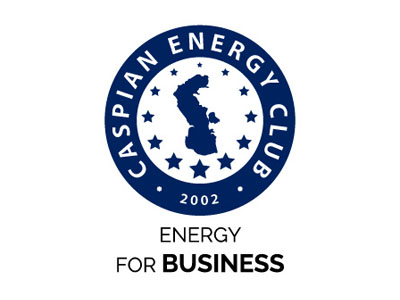This week will be marked by interest rate decisions from three major central banks: the Bank of England (BOE), the Federal Reserve (Fed), and the Bank of Japan (BOJ). Besides, inflation readings from the euro area will be in the region's spotlight.
Stock markets experienced a sharp sell-off last week as company earnings weighed on sentiment, while investors assessed central banks' policy paths. This week, market turbulence may continue amid critical central banks' rate decisions from the BOE, the Fed, and the BOJ.
ECB interest rate decision attracts markets’ attention
Earnings season will continue with influential tech companies, including Microsoft and Meta Platforms. In Europe, major energy companies, including Shell and BP, are also set to report their quarterly results.
The July flash consumer price index (CPI) for the euro area will be seen as the most influential economic indicator for the region, as the data is the critical gauge for the European Central Bank (ECB) to decide on its interest rate.
Annual inflation in the euro area cooled to 2.5% in June from 2.6% in the previous month. However, the data remained above the ECB's target level of 2% due to high prices in the services sector. Consensus suggests that annual inflation will cool further to 2.4% in July.
Other major data include flash second-quarter GDP readings from France, Spain, Italy, and Germany, providing insights into the Eurozone's economic trajectory. Particularly, Germany's economy grew by 0.2% quarter on quarter in the first three months of 2024, reversing a contraction in the final quarter of 2023.
Eurozone inflation slows to 2.5% in June, and ECB’s expectations of interest rates decline grow higher
Euro area private sector activity grew in June: activity in Spain showed the growth, while France faced contraction. Substantial growth of investments into the construction and recovery of export promoted the economic growth. The country’s economy is expected to grow by 0.1% in the second quarter.
In the UK, the Bank of England is going to make a decision on interest rates, which is a crucial event for the British stock markets and pound sterling. In June, the inflation returned to its 2% target set by the Bank of England. However, the data outstripped the expectations and delayed the central bank’s decision on August rate cut.
Though, the committee members’ opinions regarding the rates divided, the markets expected the bank to make a rate cut of 0.25%, to 5% at the meeting.
Shell and BP will report their Q2 results this week. Moreover, such large banks as HSBC and Barclays will publish their quarterly results which will indicate the situation in the financial sector. Investors will also monitor the reports of pharmaceutical companies such as Merck Group and GSK.
The Fed's policy meeting remains a critical event for Wall Street as well as the global markets. The Fed is expected to keep interest rates at 5.5% at this meeting, but is likely to lower them in September.
Inflation in the country fell to 3.3% in June, more than expected, which further increased the chances that the Federal Reserve will initiate the first rate cut since 2020.
Secondly, the July data on employment in the non-agricultural sector is another indication by the Fed towards tightening monetary policy. In recent months, the labor market has shown signs of slowdown as the unemployment rate rose to 4.1% in June, the highest since October 2021. Employment slowdown data also supported the Fed's job cuts scenario for September.
Other important data are JOLT's June vacancies and ISM's July manufacturing PMI, which will give a deeper look at the situation in the world's largest economy.
In addition, the earnings season in the United States is expected to continue to cause market volatility due to quarterly results from major technology giants. Microsoft and Meta Platforms plan to announce their quarterly results on Tuesday and Wednesday.
The monetary policy of the Bank of Japan is considered a critically important event for Asia. Analysts expect the bank to raise the interest rate for the second time and reduce bond purchases. In March, the Bank of Japan held its first rate hike since 2007, ending the negative interest rate regime that had been in effect since 2016. In July, the Japanese yen rose sharply amid bets that the Bank of Japan will further tighten monetary policy.
Germany becomes world’s third large economy after Japan faces recession
However, the interest rate in Japan remains close to zero, which is significantly lower than rates in other major economies. The country had experienced deflation for several decades before consumer prices began to rise thanks to large-scale easing policies. However, officials want to see sustainable consumer spending before introducing new restrictive measures.
China is going to publish manufacturing and non-manufacturing purchasing managers' indices (PMIs) for June. Manufacturing activity declined for the second month in a row in June, indicating a slow recovery in the country's economy.
As for other countries, the consumer price index in Australia will contribute to the volatility of the local market in the second quarter, as monthly inflation rose to 4% in May, increasing for the third month in a row. The Reserve Bank of Australia is expected to raise interest rates at its next meeting.
The last decade seemed to herald an era of energy abundance, with fast growing hydrocarbon and renewable energy production. Now this seems a distant memory, especially in Europe. European gas prices have reached unprecedented levels in the third quarter of 2022, increasing roughly 14-fold from the third quarter of 2019. At the same time, US gas prices have tripled and global oil prices have increased by about 40 percent.
Gas demand in Europe will grow by 8% in 2024, and electricity demand by 2.9%. According to ICIS Analytics, industrial demand for gas and electricity will begin to recover in the second half of the year and in 2025, but the recovery will be slow.
All attention will be focused on the demand for gas and electricity in 2024, as the market looks for signs of recovery, which were noticeable due to their absence in 2023.
In the housing sector, macroeconomic factors will be at least as important for consumer behavior patterns as the direct costs of gas and electricity they face. We expect that an increase in household purchasing power during 2024 and 2025 will lead to a gradual recovery in demand for gas and electricity in the residential sector. However, since wholesale prices remain close to the figure which is almost double what they were before the crisis, there will not be a strong recovery in public demand for gas and electricity.
We forecast annual gas demand growth in Europe of 8% and electricity demand growth of 2.9% in 2024, in both cases consumption will remain below the level of 2022.
In terms of supplies, the increase in LNG production will cover 85% of the growth in gas demand in 2024, and the regasification capacity of Western Europe will increase by 9%. It is expected that the gas storage facilities will be filled by 90%, set by the EU for the winter of 2024/2025.
The global LNG market will face shortage again as demand grows by 5% while supply increase totals only 2%. This can make European gas prices high if additional supply problems arise.
One of the trends that should be closely monitored is energy flows in Germany which will become the second largest net importer in 2024 as a result of the phase-out of nuclear power, coal and brown coal.
Power plant spreads are negative today, which means that most of the coal/gas capacities will be unprofitable for base load production in 2024, and only power plants with very high efficiency will be profitable in the first, third and fourth quarters.
Despite the fact that prices have decreased slightly since the third quarter of 2022, high energy prices are the main cause of high inflation and significantly slow down economic growth worldwide.





